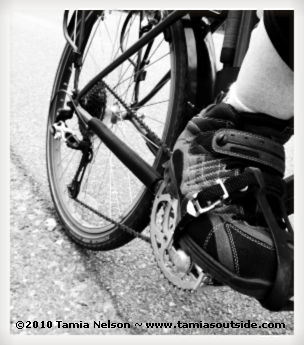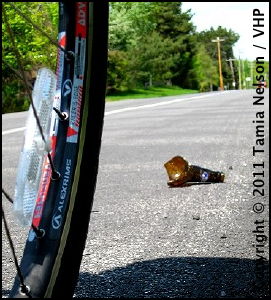Some cyclists like to go downhill hell for leather. Others would rather walk. Farwell falls into the latter category. He’s in his element when climbing, but he often finds himself wishing he could deploy a drag chute when the road slopes downward. He’s not alone. Even professional bike racers get spooked by fast descents. FDJ’s Thibaut Pinot abandoned the 2013 Tour de France in tears because he feared descending. “Some people are afraid of spiders or snakes,” he explained. “I’m afraid of speed. It’s a phobia.” But Thibaut has now mastered his fear, and he’ll most likely be standing on the podium on Sunday — this after many grueling mountain stages with plenty of technical, high-speed descents.
Of course, Thibaut’s fears were well-founded. Descending is dangerous, and it’s no less so for everyday cyclists whose bikes are heavily loaded, whether the load is camping gear or groceries. Which is why I touched on the topic in another article titled Going Downhill and Liking It. I wasn’t foolish enough to think I’d written the last word on … Continue reading »


